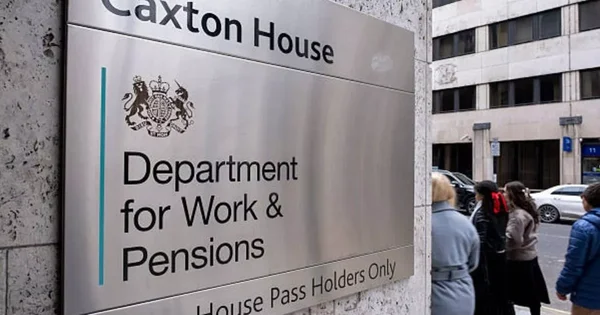All You Need to Know
Starting a side hustle is exciting, whether you’re selling handmade crafts online, doing some freelance work, or renting out a spare room. Side hustles have become increasingly popular as a way to earn extra income, allowing people to supplement their main earnings in flexible ways. But alongside the thrill of earning extra cash comes tax responsibilities you need to understand.
Pie makes tracking side hustle income alongside your main job simple with real-time tax calculations. Or if you’re just here to get to grips with it all, let’s break it down! Side hustles can even grow into full-fledged businesses, so it’s important to start with the right knowledge.
What is a UTR number anyway?
A UTR (Unique Taxpayer Reference) is a 10-digit number issued by HMRC when you register for Self Assessment. (Unique Taxpayer Reference (UTR)) Think of it as your personal tax ID code for self-employment.
This number stays with you for life and is essential for filing tax returns. The UTR is used within the self assessment system to identify individuals for tax purposes, and you’ll need it for all communications with HMRC about your self-employed income.
Unlike your National Insurance number, a UTR is specifically for managing income that isn’t taxed at source. It becomes a crucial piece of your tax identity and is essential for tax purposes, especially when managing income outside of PAYE.

Do I need a UTR number for my side hustle?
The short answer is: it depends on how much you earn. The UK has a tax-free trading allowance of £1,000 per tax year.
If your taxable income from your side hustle brings in less than the £1,000 tax-free trading allowance annually, you typically don’t need to register for Self Assessment. You can simply enjoy your earnings tax-free and have no tax obligations.
However, if your taxable income from your side hustle exceeds £1,000, you have tax obligations and must legally register as self-employed and get a UTR. This applies even if you have a full-time job where you pay tax through PAYE.
HMRC considers your total income—including both employment income and side hustle earnings—when determining if you need to start paying tax. Sole traders must also meet these tax obligations.
Your side hustle is considered a separate income source that needs declaring. Missing this requirement could lead to penalties down the line.
When should I register for Self Assessment?
You need to register by 5th October after the end of the tax year in which you started your side hustle. For example, if you began in February 2023, you’d need to register by 5th October 2023. Registering in time is essential to ensure compliance with HMRC requirements and to be able to submit your self assessment tax return.
Don’t wait until you hit the £1,000 threshold to register. If you expect to exceed the Trading Allowance, it’s better to register early, as this helps you avoid missing the tax return deadline.
The registration process can take several weeks, as HMRC will post your UTR to your home address. I learned this the hard way when I started freelance writing – my UTR arrived just days before the filing deadline!
Missing the registration deadline can result in penalties. Timely registration is crucial to ensure compliance with HMRC rules. It’s best to sort this out as soon as your side gig shows promise.

Is my side activity actually taxable?
HMRC looks at several factors to determine if your activity counts as a business. They consider whether you are selling goods or services with the intention to make profits and if you are meeting tax requirements.
Is there a pattern or regularity to your trading? Regular sales or services point toward business activity rather than a hobby.
Are you organised in a business-like manner? Being organised for tax purposes is important—having business cards, a website, or dedicated social media accounts all suggest business intent.
Remember that “hobby income” isn’t actually a recognised tax category. If you’re regularly making money from an activity, HMRC likely considers it taxable. If your activity is considered a business, you may be able to reduce your tax bill by claiming allowable expenses, such as costs for materials, website fees, or travel, against your profits.

How to get your UTR number
Register for Self Assessment on the HMRC website by selecting “Register for Self Assessment” and then “I am self-employed.” The registration process is straightforward but not instant.
You’ll need your National Insurance number and basic personal information to complete the registration process. It’s important to keep accurate records of all documentation and information you provide during registration.
Once registered, HMRC will post your UTR to your home address within about 10 working days. They won’t provide it by email for security reasons. Be sure to promptly respond to any HMRC correspondence during this process.
After receiving your UTR, you can set up your Government Gateway account to manage your tax affairs online. This makes future tax submissions much easier.
Final Thoughts
Getting a UTR number for your side hustle isn’t just about following tax rules – it’s about legitimising your business activities and taking the first step toward building your own business. It gives you the freedom to grow without tax worries.
If you’re earning over £1,000 in additional income from your side venture, this counts as taxable income and registering for Self Assessment is a legal requirement. The good news is that registration also allows you to claim expenses and ensures you meet all tax requirements.
Staying on top of your tax affairs from the beginning saves you from potential stress and penalties. Remember, savings interest may also need to be reported as part of your total taxable income. It’s far easier than trying to sort out years of undeclared income later.
As your business grows, building a strong connection with your customers or audience is key to long-term success.

Pie.tax: Simplifying Side Hustle Tax
Running a side hustle should be rewarding, not stressful because of tax worries. Pie.tax supports you throughout your side hustle journey, helping you stay compliant without the headache.
The UK’s first personal tax app, Pie.tax helps you track multiple income streams in one place. It automatically calculates tax on your side hustle earnings alongside your main job.
Our simple receipt scanning feature makes expense tracking painless. You’ll ensure you claim everything you’re entitled to against your side hustle income. Pie.tax also offers support with marketing resources, such as graphic design, to help side hustlers enhance their branding and reach their target audience effectively.
When it’s time to file your Self Assessment, Pie walks you through the process step-by-step. You’ll report your UTR-registered side hustle correctly with confidence.
Curious to see how it works? Take a peek at Pie.tax and discover how much easier managing your side hustle tax could be.









